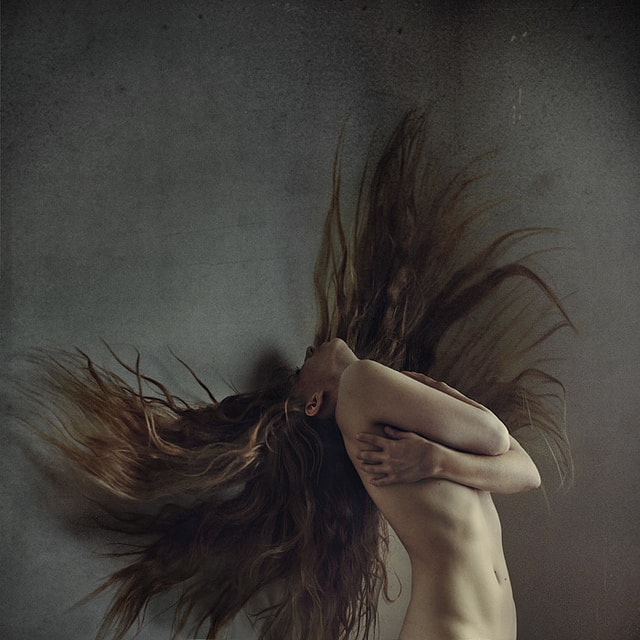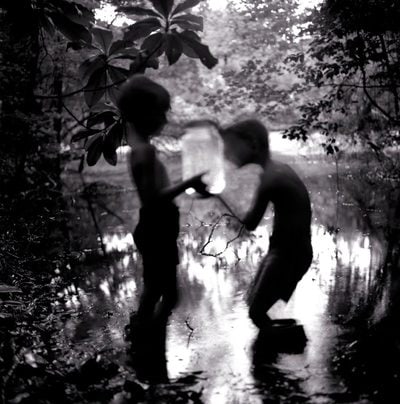Scattered around this blog post are some of my favorite photographs, specifically those I consider to be truly intelligent, beautiful and artistic in nature. I have chosen mainly photographs of people, as for me it is a genre I truly admire, while finding the human form, in it’s many molds, a beautiful thing. Oddly enough, when looking back over my choices, I noticed water in 3 out of 5 shots… Interesting.
Anyway. Photographic art is obviously not limited to pictures of the human form. In fact any attempt to limit photographic art to any one form would be counterproductive indeed. So what exactly is photographic art? Well let’s have a look shall we.
Firstly, Is Photography Art?
The Oxford definition of art as a noun is “The expression or application of human creative skill and imagination, typically in a visual form such as painting or sculpture, producing works to be appreciated primarily for their beauty or emotional power.”
Photography is rather poignantly obvious in this definition, purely in its absence, whether intentional or not. In principle however, I agree with the definition, but I think there is a little more to it than that. Especially as modern photography can, and this may be an unpopular statement, produce “great beauty and emotion” in 1/1000th of a second, with little-to-no forethought, nor post production effort whatsoever.
In fact, to paraphrase Lady Eastlake, one of the earliest naysayers of photography as an art; Truth and reality are valid qualities of images produced by a machine, but these cannot compete with the qualities of refinement, taste, spirituality, genius or intellect required to create the main ingredient of artistic creation. Beauty.
Actually, perhaps the old duck had a point.
Those against, raise your hands
However; Before you close this blog down in furious anger and come hunting for my scalp, let me explain what I mean with a slightly stretched and over-used analogy involving monkeys and typewriters. As with the infinite monkey theory, if enough people take enough random photographs for a long enough time, eventually one of those people will produce an image that is profound and exquisite and could be considered a true work of art, without ever actually intending to do so. It may seem absurd, but look at it this way;
How many people now have access to a means of producing a digital image, given the popularity and capabilities of cell phone, compact and DSLR cameras? How many digital images are produced daily worldwide? Given the low cost of storage as well as the advent of social media, how many digital images actually exist right now, from hard drives in homes all the way to mass online storage and social media? It has to be trillions and growing every day. Rules of statistics dictate that somewhere in those trillions are truly unintended works of art.
Furthermore, by definition, photography is a moment in time captured with light. That in itself is a fairly simple, mechanical process which takes place at the instant the shutter is pressed. The “machine” in question doing what is necessary to take a digital recording of the light for the prescribed moment in time of whatever the lens is pointed at. Thus a photograph is created and a photographer is born.
So, at what point then does this moment in time, captured by recording the light, by a machine no less, become art?
Those for, raise your cameras
Well, looking back to the latter 1800’s, bear with me folks, with the advent of institutes such as the Royal Photographic Society and the Societe Francaise de Photographie, still in existence today, the battle lines had been drawn in the war for the recognition of Photography in the world of art. Statements such as ” the question is not whether photography is fine art per se – neither painting nor sculpture can make that claim – but whether it is capable of artistic expression; whether in the hands of a true artists its productions become works of art” were at the vanguard of their publications. Naturalist Louis Figuier also summed things up nicely by stating ” Until now, the artist has had the brush, the pencil and the burin; now, in addition, he has the photographic lens. The lens is an instrument like the pencil and the brush, and photography is a process like engraving and drawing, for what makes an artist is not the process but the feeling.”
In many ways, the modern photographer owes so much to these early societies, supporters and indeed pioneer photographers such as John Jabez Edwin Mayall, Julia Margaret Cameron, Lewis Carroll, Oscar Gustave Rejlander, F. Holland Day, Alfred Stieglitz and Edward Steichen, to name but a few. As these advocates of photography as an art form, through tirelessly practicing and refining their methods, campaigning, holding private and then public photographic exhibits through to eventually participating in fine art exhibits, firstly as outcasts and then as accepted peers, have successfully enlightened photography as an accepted art form, without doubt, in the eyes of the world.
This is evident not only in the price that some photograph prints have reached at auction recently, but that making a living as a photographic artist is a truly viable option.
So, photography is art then, but what actually makes a photograph a piece of art?
A moment in time captured is enough for some and indeed, some truly talented people have the ability to capture moments in time and create art in the same instant, but I can guarantee that those people did so with forethought and intent. Both before and after the shutter was clicked. In one way or another, there was an intended purpose to the image in the first place and the artist placed themselves (often repeatedly) in the right place at the right time in order to capture the fleeting light depicting the desired, exact moment and, additionally, time was spend developing that image into its final form.
And that, specifically, is my point on the subject of Photography as Art. If the resulting image was planned, executed and processed with the sole intention of being a piece of art, then in my books, it is art. The photograph exists for no other reason other than to be a work of art. I am by no means saying that photography that was not intended to be an art work has any less value or cannot possibly be art, as some photographs were produced with the only intention being to capture a moment in time, or document an event or communicate a message or advertise a product etc. And, many such images have been so beautiful and/or emotionally profound that they find themselves classified as masterful, photographic art, regardless of the original intended purpose.
I am also by no means saying that any image produced with the intention of being art, by default makes a successful piece of art, in the same way that me throwing some paint at a canvas will likely only create a mess, no matter what my artistic intentions were.
There is obviously some sort of credibility required, some intelligence, creativity and insight which needs to be included in the process of creating photographic art. These are all factors which DPC will teach you, should you venture into the world of Fine Art Photography Course with them at your side, and I am not going to go into detail, but ultimately it boils down, in my opinion anyway, to how much you are willing to suffer for your art. Hmmm, “suffering for our art”, that does seem a little old fashioned and I am definitely not promoting the amputation of ears at any point, but I feel it is still valid in this day and age, but that is a discussion we can reserve for another time.
So, Intent then?
Of those few out there who have read other posts prepared by yours truly, some may have picked up on the fact that I bang on a lot about this intent thing, but that is because I believe so strongly in it. Intent has a place and perhaps has different purposes in all genres of photography. In photographic art however, intent is paramount, right up there with passion and perseverance. Every single image should be dreamed, planned, executed and perfected with the sole intention of making a profound statement of beauty or emotion. The camera simply replaces the hammer and chisel, or the paint brush as a tool providing an outlet for the creativity we have in all of us. I am thankful every day for this tool too, as I am a hopeless painter and even worse sculptor!








That is so true Ian. It is exactly that with which I am struggling at the moment.
“While intent is the seed of manifestation, action is the water that nourishes the seed. Your actions must reflect your goals in order to achieve true success.”
―Steve Maraboli
Spoken from the heart with honesty and humility. Your article is filled with inspiration and …. dare I say ‘ Hope’ for those of us that have not surrendered to the passion of creating beautiful art in light and shadow.
Kevin, I absolutely love this article! And I love your insistence on intent, it is something I am slowly trying to master, and it makes a huge difference to the photos I take.